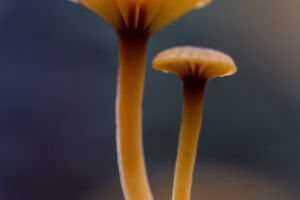Muscari botryoides, commonly known as the grape hyacinth, is a charming perennial bulb that brings vibrant color and delicate fragrance to gardens.
Known for its dense clusters of small, bell-shaped flowers, this plant is a favorite among gardeners for its ease of growth and attractive appearance.
One of the common questions posed by those cultivating Muscari botryoides is, “How long does it take for this plant to sprout?” Understanding the sprouting timeline of Muscari botryoides involves examining its growth cycle, environmental needs, and care requirements.
The sprouting timeline of Muscari botryoides primarily depends on the planting time and environmental conditions. Typically, Muscari botryoides bulbs are planted in the fall, ideally in September or October, before the first frost.
Planting during this time allows the bulbs to establish roots before the onset of winter. The actual sprouting or emergence of the plant can be influenced by several factors, including temperature, soil conditions, and bulb health.
1. Planting and Root Development
After planting the bulbs, it generally takes between 8 to 12 weeks for Muscari botryoides to establish a root system. During this period, the bulbs are developing their roots underground, preparing for the next phase of growth.
This initial phase is crucial as it sets the foundation for successful sprouting and flowering. The root development phase is relatively slow and often goes unnoticed since the growth occurs below the soil surface.
2. Dormancy and Temperature Effects
Muscari botryoides requires a period of cold dormancy to trigger its growth cycle. The cold temperatures of winter help to break the bulb’s dormancy, signaling the plant to begin sprouting when temperatures rise in spring.
This natural cold stratification process is essential for the bulbs to transition from dormancy to active growth. In regions with mild winters, where natural cold periods are insufficient, gardeners might need to simulate this cold period by refrigerating the bulbs before planting.
3. Sprouting and Emergence
Once the soil temperatures begin to warm up in early spring, typically around March or April, Muscari botryoides starts to sprout. The initial sprouting phase usually takes about 2 to 4 weeks from the time the soil temperature reaches around 50°F (10°C).
The first signs of sprouting are small green shoots emerging from the soil. These shoots will gradually grow taller and develop into the characteristic clusters of flowers.
4. Factors Influencing Sprouting Time
Several factors can influence the sprouting time of Muscari botryoides:
Soil Temperature: Consistent soil temperatures are crucial for timely sprouting. If the soil remains too cold, the sprouting process may be delayed. Conversely, if the soil warms up too quickly, it might affect the plant’s development.
Soil Quality: Well-drained, nutrient-rich soil promotes healthy root development and sprouting. Poor soil conditions can lead to slow growth or even bulb rot.
Watering: Proper watering is essential. While the bulbs need moisture to establish roots, overwatering can lead to fungal diseases and hinder sprouting.
Bulb Quality: Healthy, firm bulbs with no signs of mold or damage are more likely to sprout on time. Selecting high-quality bulbs from reputable suppliers can improve the chances of successful sprouting.


